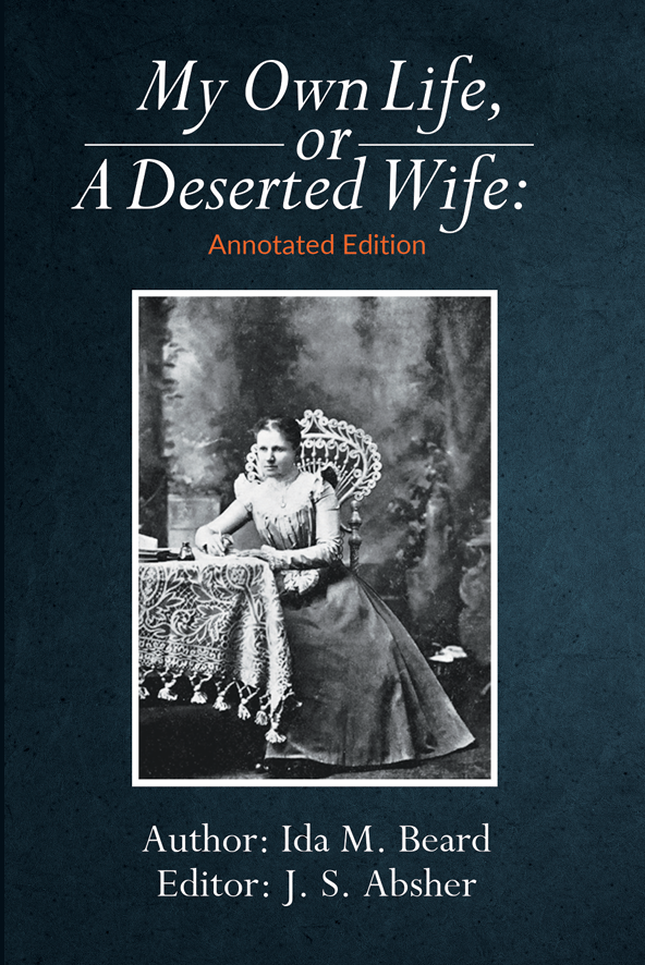
In April 1898, Ida Crumpler Beard self-published the story of her childhood, abusive marriage, and attempts to support herself and her two children. Her book eventually sold 90,000 copies. My edition provides extensive background information on people, places, and incidents she mentions; it is available on Amazon.
Shown in background is the Sanborn-Perris insurance map dated April 1895. It is an invaluable resource for researching Winston-Salem in that period.
Shown in background is the Sanborn-Perris insurance map dated April 1895. It is an invaluable resource for researching Winston-Salem in that period.
In April 1898, a new book appeared on the streets of Winston-Salem, My Own Life or, A Deserted Wife. It was a deeply personal work, revealing the intimate details of the author’s married life. The book had a two-fold purpose—to make sufficient money to support the author and her two children and to show “in his true colors” the character flaws and misdeeds, public and private, of the man who had abandoned them. A local newspaper thought that the author, Ida Crumpler Beard, had erred in publicizing her “sad [domestic] affairs”: “a parade of the particulars in print does not heal the breach or tend to elevate the moral good of a gossip loving public” (Union Republican, 5 May 1898, 6). But over the next 36 years Ida would sell more than 90,000 copies. The book that once appeared somewhat scandalous became, after the Great War, the quaint relic of a bygone era. Ida died in poverty in 1951.
Ida wrote the book, she said, only after the ghosts of relatives she’d never met—a then famous cousin (a heroic casualty of the Civil War) and her paternal grandfather—appeared to her and urged her to write. She published the book herself, to the admiration of several newspaper writers. She obtained letters of recommendation from prominent men and then spent years on the road selling her book. My Own Life book is not an undiscovered classic, but it is full of interesting incidents and people. Set during the rise of a prosperous tobacco city, the Panic of 1893, and the coming of Jim Crow, it has everything—romantic love, neglect and abuse, a wicked stepmother and runaway sisters, tragic deaths from typhoid fever and cancer, a race riot, fraud and deceit, the disastrous effects of economic depression, drug and alcohol abuse, unexpected kindness, persistence in the face of adversity—and of course the intercession of friendly ghosts.
Relying on hundreds of contemporary newspaper articles, I have provided extensive annotations on Ida’s life and times, with biographical sketches of two hundred people who play a part in her story.
Ida wrote the book, she said, only after the ghosts of relatives she’d never met—a then famous cousin (a heroic casualty of the Civil War) and her paternal grandfather—appeared to her and urged her to write. She published the book herself, to the admiration of several newspaper writers. She obtained letters of recommendation from prominent men and then spent years on the road selling her book. My Own Life book is not an undiscovered classic, but it is full of interesting incidents and people. Set during the rise of a prosperous tobacco city, the Panic of 1893, and the coming of Jim Crow, it has everything—romantic love, neglect and abuse, a wicked stepmother and runaway sisters, tragic deaths from typhoid fever and cancer, a race riot, fraud and deceit, the disastrous effects of economic depression, drug and alcohol abuse, unexpected kindness, persistence in the face of adversity—and of course the intercession of friendly ghosts.
Relying on hundreds of contemporary newspaper articles, I have provided extensive annotations on Ida’s life and times, with biographical sketches of two hundred people who play a part in her story.